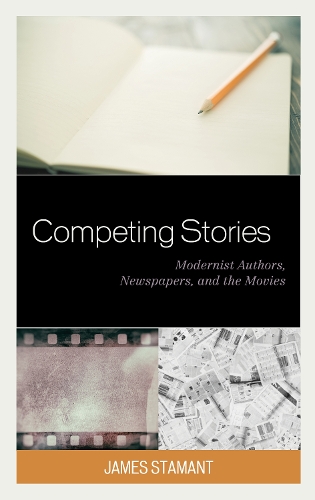
Competing Stories: Modernist Authors, Newspapers, and the Movies
(Hardback)
Publishing Details
Competing Stories: Modernist Authors, Newspapers, and the Movies
By (Author) James Stamant
Bloomsbury Publishing PLC
Lexington Books
8th November 2019
United States
Classifications
Professional and Scholarly
Non Fiction
813.40939
Physical Properties
Hardback
208
Width 159mm, Height 230mm, Spine 23mm
494g
Description
Major changes in media in the late 19th and early 20th centuries challenged traditional ideas about artistic representation and opened new avenues for authors working in the modernist period. Modernist authors reactions to this changing media landscape were often fraught with complications and shed light on the difficulty of negotiating, understanding, and depicting media. The author of Competing Stories: Modernist Authors, Newspapers, and the Movies argues that negative depictions of newspapers and movies, in modernist fiction, largely stem from worries about the competition for modern audiences and the desire for control over storytelling and reflections of the modern world. This book looks at a moment of major change in media, the dominance of mass media that began with the primarily visual media of newspapers and movies, and the ways that authors like Ernest Hemingway, Zora Neale Hurston, James Joyce, Djuna Barnes, and others responded. The author contends that an examination of this moment may facilitate a better understanding of the relationship between media and authorship in our constantly shifting media landscape.
Reviews
In Competing Stories: Modernist Authors, Newspapers, and the Movies, James Stamant reminds us that the medium is indeed the message. This exhilarating study demonstrates that while modernist mainstays like James Joyce and F. Scott Fitzgerald lamented the emergence of "new media" they nevertheless assimilated the influence of their era's transformative "platforms,", their storytelling often absorbing the conditions of collaboration these technologies instituted while regretting the eroding of artistic singularity they occasioned. Whether newspapers or the cinema, these forms of mass communication and entertainment both reflected and enabled the acceleration of culture, altering notions of craftsmanship. In addition to a thoroughly historical and theoretical analysis of the implications of these media, Stamant deserves credit for focusing on a variety of neglected texts, from Fitzgerald's Pat Hobby series to short stories by Djuna Barnes's and Sui Sin Far to footage Zora Neale Hurston shot during her fieldwork in folklore. Competing Stories demonstrates how the literary arts in the end bested the competition for artistic accomplishment.
--Kirk Curnutt, Executive Director, The F. Scott Fitzgerald Society
Author Bio
James Stamant is visiting assistant professor of English at Agnes Scott College.
